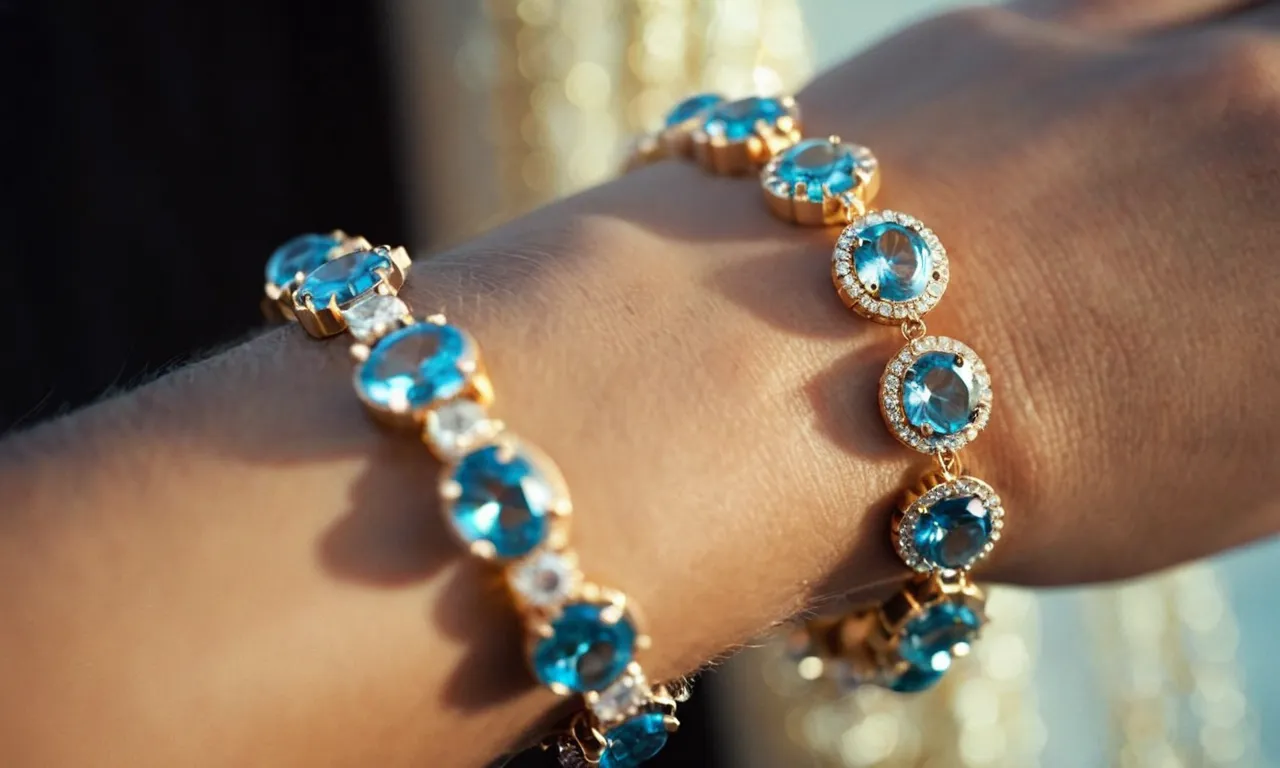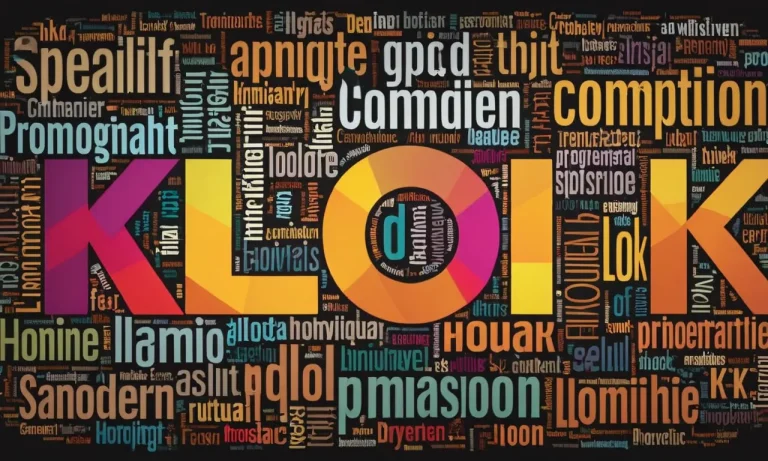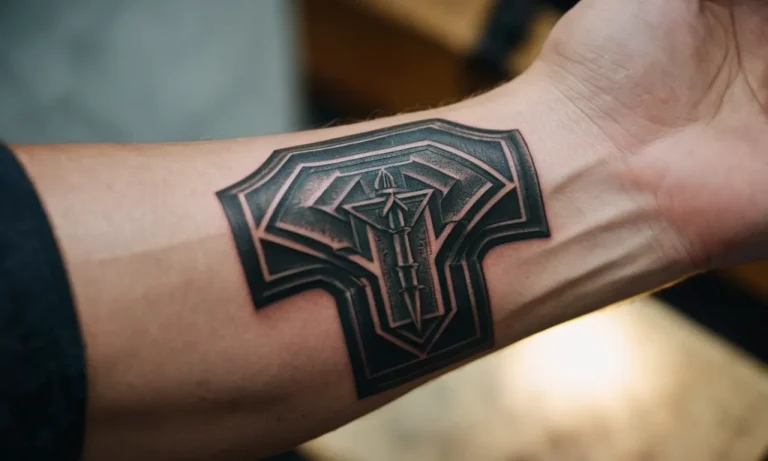Who Wore Crystals In The Bible? A Detailed Look At The Use Of Crystals In Biblical Times
Crystals and gemstones have captured the fascination of humankind for millennia. Their beauty and mystical qualities make them objects of desire and intrigue. Throughout history, many cultures have attributed healing, protective, and even supernatural powers to certain crystals and gems.
This holds true for several biblical figures as well, who used crystals for adornment, ritual, and symbolic purposes.
If you’re short on time, here’s a quick answer to your question: Crystals and gems were mainly used for adornment and ritual purposes in the Bible. Notable figures like the High Priest Aaron wore crystals and gems on ceremonial vestments prescribed by God.
The New Jerusalem described in Revelation also contains precious gemstones.
In this comprehensive article, we will explore the various ways crystals and gems were used in the Bible. We’ll look at significant biblical figures who wore or used crystals, examine the ritualistic and symbolic meaning behind these minerals, and more.
Let’s dive in to unravel the mystery of who wore crystals in the bible.
Crystals in the Vestments of the High Priest Aaron
According to the Bible, God provided specific instructions to Moses regarding the sacred vestments that were to be worn by Aaron and the other priests. These details are recorded in Exodus 28.
God commanded that sacred garments be made for Aaron, so he could minister before the Lord. These vestments were to reflect Aaron’s holy calling and set him apart as consecrated to the Lord (Exodus 28:2-3).
The elaborate vestments included a breastpiece, an ephod, a robe, a tunic, a turban and a sash. Gold, blue, purple and scarlet yarn were used in the weaving of the vestments (Exodus 28:5-8).
Further specifications were provided for each element of the priestly attire. For example, the ephod was to be made of gold, blue, purple and scarlet yarn and fine linen. It was to have two shoulder pieces joined at its two edges.
The skillfully woven waistband was to be attached to the ephod to fasten it (Exodus 28:6-8).
The Lord gave particular instructions about the breastpiece to be worn by the high priest. It was described as a pouch made with similar materials and was to be attached to the front of the ephod (Exodus 28:15-30).
The 12 Jewels on the Priest’s Breastplate
One of the most fascinating features of the high priest’s vestments was the breastpiece inset with 12 precious stones, each engraved with one of the names of the tribes of Israel.
The 12 stones were as follows:
- Ruby
- Topaz
- Beryl
- Turquoise
- Sapphire
- Emerald
- Jacinth
- Agate
- Amethyst
- Chrysolite
- Onyx
- Jasper
The order of the stones listed in Exodus 28:17-20 corresponds to the order of the 12 tribes as they camped around the tabernacle during the exodus from Egypt (Numbers 2:2-31).
These precious gems adorning Aaron’s breastpiece reflected the preciousness of the 12 tribes in the eyes of God. The names being inscribed on them may have signified God’s knowledge of each tribe by name and his concern for their well-being.
The Symbolic Significance of the 12 Stones
Bible scholars have proposed various symbolic meanings for the 12 stones.
Different stones have been associated with the 12 apostles and the 12 foundation stones of the New Jerusalem described in Revelation 21. The 12 facets cut into a brilliant-cut diamond are also linked to the 12 tribes.
In addition, the 12 stones have been connected to the 12 signs of the zodiac, the 12 months of the year, and the 12 hours of the day.
The high priest wearing the breastplate with these stones on his heart may symbolize him bearing the weight of the 12 tribes on his heart before God as he interceded for the Israelites in the tabernacle.
The varied, beautiful colors of the gems are thought to reflect the diversity and unity of the 12 tribes. The richness of the stones points to God’s prospering of the tribes and the chieftains’ generous contributions toward the tabernacle (Numbers 7:84-86).
Ultimately, the bejeweled breastpiece highlights the radiance, glory and perfection of God’s purposes for Israel. The high priest stood as a representative of God’s people, covered in brilliant stones and resplendent garments as he ministered in God’s presence.
The New Jerusalem’s Foundation Stones
The apostle John recorded an awe-inspiring vision of the New Jerusalem in Revelation 21. In this vision, John saw the holy city coming down out of heaven from God, shining with the glory of God (Revelation 21:10-11).
The city was described as a bride beautifully dressed for her husband, indicating the people of God inhabiting the city (Revelation 21:2).
John provided vivid details about the appearance of the New Jerusalem. The city was laid out as a square, with three gates on each side named after the twelve tribes of Israel. The walls were high and broad, made of jasper, and the twelve foundations were adorned with precious stones (Revelation 21:12-21).
The brilliance of the city’s gemstones points to its glory, beauty, and value.
The 12 Foundations Made of Precious Stones
The foundations of the New Jerusalem’s walls were decorated with 12 precious stones, each a different variety:
- Jasper
- Sapphire
- Chalcedony
- Emerald
- Sardonyx
- Sardius
- Chrysolite
- Beryl
- Topaz
- Chrysoprase
- Jacinth
- Amethyst
The brilliant colors and clarity of these gems emphasize the glory of God emanating from the city. Their arrangement in 12 foundational layers represents the 12 apostles, underscoring how the New Jerusalem is built on the gospel they proclaimed (Ephesians 2:20).
Possible Symbolic Meanings of the Foundation Stones
Beyond their natural beauty, the 12 gemstones likely had symbolic significance for John and the first readers of Revelation:
- Jasper – Purity, light, glory of God
- Sapphire – Heaven, God’s throne
- Chalcedony – Humility, kindness
- Emerald – Victory, eternal life
- Sardonyx – Purity, priesthood
- Sardius – Sacrifice, passion
- Chrysolite – Wisdom, courage
- Beryl – Obedience, strong faith
- Topaz – Leadership, priesthood
- Chrysoprase – Joy, gladness
- Jacinth – Royal purple, Christ’s kingdom
- Amethyst – Suffering, humility
Together, these resplendent gems represent aspects of God’s glory, Christ’s redemptive work, and godly virtues. Their inclusion in the New Jerusalem provides a visual reminder of God’s majesty and the spiritual riches that await believers there.
Other Significant Biblical Figures Associated With Gems and Crystals
Ezekiel’s Vision of God on a Sapphire Throne
The prophet Ezekiel had a profound vision of God seated on an elaborate throne (Ezekiel 1:26). What made this throne unique was that it was made of “sapphire stone” which is the deep blue precious gemstone. This signifies God’s supreme glory, majesty, and holiness.
The brilliant radiance of the sapphire symbolizes the awe-inspiring presence of the Almighty who appeared like a “glory of the Lord” to Ezekiel.
Later in Ezekiel 10:1, the prophet again saw a vision of God’s throne with a fascinating description of his glory – “As I looked, behold, on the expanse that was over the heads of the cherubim there appeared above them something like a sapphire stone, in appearance like a throne.”
This specifies how God made his presence evident to Ezekiel using radiant and exquisite sapphire gemstones.
Lucifer Covered in Precious Gems Before His Fall
Lucifer was initially one of the highest ranking cherubim angels serving in God’s throne room in heaven. Ezekiel 28:13 describes his appearance – “You were in Eden, the garden of God; every precious stone adorned you: ruby, topaz and emerald, chrysolite, onyx and jasper, sapphire, turquoise and beryl.
Your settings and mountings were made of gold; on the day you were created they were prepared.”
Lucifer was decorated with all varieties of ornate gemstones like ruby, topaz, emerald etc symbolizing his splendor before sin was found in him. But his obsession with self-glorification led the Lord to cast him out of heaven.
So Lucifer went from being the “morning star” and “son of the dawn” to becoming Satan – the enemy of God after his rebellion.
The Pearl of Great Price Parable
Jesus told a parable equating the kingdom of God to a “pearl of great price” in Matthew 13:45 – “Again, the kingdom of heaven is like a merchant in search of fine pearls who, on finding one pearl of great value, went and sold all that he had and bought it.”
Just as a precious pearl is valuable and highly-priced, God’s kingdom is the greatest treasure anyone could possess.
The pursuit of God’s kingdom is worth sacrificing everything for, like the merchant selling all his possessions for the single outstanding pearl. Through this narrative, Christ highlighted salvation’s incomparable worth over any earthly achievements or belongings.
The pearl also represents the immense joy believers possess in belonging to Christ’s kingdom.
Evidence of Ancient Gemstone Use in the Holy Land
Archeological Finds in Israel and Surrounding Areas
Archeological excavations in Israel and surrounding regions have unearthed evidence of ancient gemstone use dating back thousands of years. Sites like Megiddo, Jericho, and Tel el-Ajjul contain jewelry and ornamental objects made with various semiprecious stones like carnelian, lapis lazuli, agate, and jasper (Israel Antiquities Authority, 2022).
One notable example is the Uluburun shipwreck found off the coast of Turkey, which dates to the 14th century BCE. It contained a rich cargo of Canaanite jewelry including gold earrings, rings, bracelets, beads, and amulets decorated with gems like lapis lazuli, carnelian, amber and more (Bass, 1986).
This shows active gem trade in the Levant during Biblical times.
References to Gems in Other Ancient Texts
References to gemstones are found across ancient Near Eastern texts contemporary with the Bible. For example, the Amarna letters from 14th century BCE Egypt mention sending gifts of jewelry with red and green gems to kings.
Neo-Assyrian texts from Mesopotamia in the 8th-7th centuries BCE describe plunder of silver, gold, gems and precious stones from conquered lands (Aruz et al. 2008).
Tablets found in the ancient city of Ebla (modern Syria) date back to 2500 BCE and contain some of the earliest known gemstone inventories describing carnelian, lapis lazuli, quartz and more. These confirm gemstones were widely circulated for jewelry, seals and ornamental objects in the Levant since very ancient times (Pinnock, 2001).
Gem Engraving and Lapidary Work in Biblical Times
Advanced techniques of gemstone carving, cutting and engraving existed in Biblical times. Archaeologists have found cabochon carnelian and cylinder seal engraved gems in sites across Israel evidencing skilled lapidary work (Israeli & Cooney, 2015).
Engraved stamp seals and signet rings are mentioned being used to seal documents and signify authority in various Biblical stories about kings, nobles and merchants.
Analysis of the engraving styles date them anywhere from the 12th century BCE to the 7th century BCE covering both the First and Second Temple Periods (Keel, 1995). Expert gem cutting and engraving meant trade networks supplied these valuable stones to skilled artisans across the ancient Near Eastern world including the Holy Land regions depicted in the Bible.
The Spiritual and Symbolic Significance of Crystals in the Bible
Association with Divine Encounter and Revelation
In the Bible, crystals were often associated with divine encounters and revelation. For example, Exodus mentions that the Ten Commandments were written on sapphire stone tablets (Exodus 24:10). This shows how crystals were seen as special, sacred objects that could convey God’s words.
The prophet Ezekiel had vivid visions which included glimpses of God’s throne, which was described as sparkling like crystal (Ezekiel 1:22). For Ezekiel then, crystals evoked the awe-inspiring glory and majesty of heaven.
The final book of the Bible, Revelation, also uses sparkling stones and crystals to evoke the splendor of the New Jerusalem (Revelation 21:11). So to the biblical authors, crystals could represent the intersection between the earthly and the divine realms.
Representation of the 12 Tribes and Apostles
In Exodus, we read about the sacred breastplate worn by the High Priest. This breastplate was decorated with 12 precious gemstones that represented the 12 tribes of Israel (Exodus 28:15-21). When the High Priest entered God’s presence in the tabernacle, he spiritually carried the 12 tribes with him via these gemstones.
Similarly in Revelation, the 12 foundation stones of the New Jerusalem were inscribed with the names of the 12 apostles (Revelation 21:14). So crystals could represent people groups who were precious in God’s sight.
Symbols of Light, Beauty, and the Heavens
Light and Beauty: Precious stones like diamonds or emeralds are frequently used as symbols of light and beauty in the Bible. For example, the High Priest’s breastplate may have glittered when he walked, beautifully reflecting the sanctuary’s lamps.
Ezekiel poetically describes the King of Tyre being covered in shiny gemstones before falling into sin (Ezekiel 28:13-15).
The Heavens: Sapphire stones were used in descriptions of God’s throne to evoke the blue heavens (Exodus 24:10). Emeralds representing green could symbolize the earth, God’s footstool (Isaiah 66:1). So crystals could poetically connect heaven and earth.
Conclusion
Throughout the Bible, crystals and gems carry spiritual, symbolic, and ritual significance. While mainly used for ornamental purposes, the multilayered meanings behind these stones revealed in scripture give us insight into ancient perspectives on materiality, beauty, and the divine.
The gleaming jewels worn by figures like the High Priest represented sacred duties and covenants. The crystalline New Jerusalem envisioned by John was a metaphor for divinity made material. Beyond their beauty, crystals pointed to deeper theological truths for early Jewish and Christian readers.
So when we ask “who wore crystals in the Bible?” the answer encompasses prophets, priests, angels, and even God Himself. More than just decoration, these crystals reflected the mystery and glory of the heavens coming down to earth.








